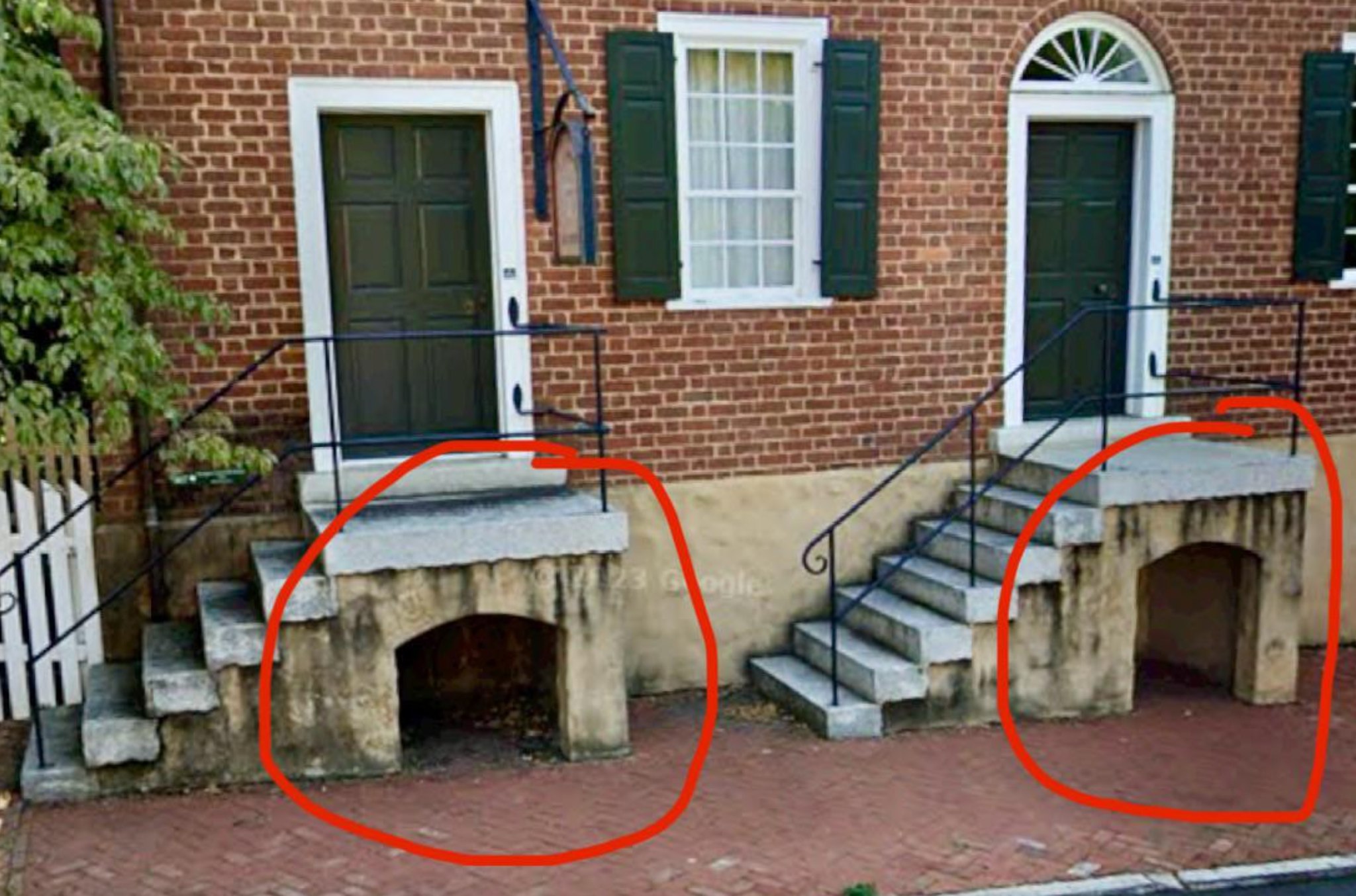Wandering through historic city neighborhoods like New York or Philadelphia, you might notice something odd under the front steps of old rowhouses—a small, bricked-in chamber or arched nook. These aren’t just architectural oddities; they’re stoop vaults, clever features from the 18th and 19th centuries that served a vital role in urban homes and still captivate us with their hidden history.
In cities with poor drainage, homes were often built with raised entrances to stay above floodwaters, leaving empty spaces under the steps. These areas, built with brick or concrete, became stoop vaults, used mainly to store coal, the primary fuel for heating homes and powering appliances back then. Delivery workers would pour coal through a sidewalk hatch into the vault, keeping the dusty fuel out of living spaces while making it easy to grab when needed, especially during the World War I era.

Space was tight in crowded cities, where big basements or backyards were rare. Stoop vaults offered a smart solution, holding not just coal but also firewood, tools, or seasonal gear, keeping homes organized. As modern heating systems replaced coal, many vaults were sealed up or abandoned, but they still dot historic neighborhoods. A Reddit post once highlighted two rowhouses with clear vault arches, and a homeowner in Bremerton, Washington, shared how their 1939 home’s vault, sealed in the 1970s, was reopened in the 1990s and now stores firewood with better drainage.
These vaults are more than relics; they’re a window into a time when every inch of a home had to work hard. Some homeowners keep them as historic treasures, while others turn them into modern storage or even small gardens. They reflect a practical, creative approach to urban living, when heating a home was a hands-on task requiring clever design.
Next time you spot a sunken space or arch under a stoop, pause to think about its story. It once held the fuel that warmed a family through cold winters, and today, it quietly preserves a piece of urban history, showing how past generations made the most of their space with ingenuity and care.


